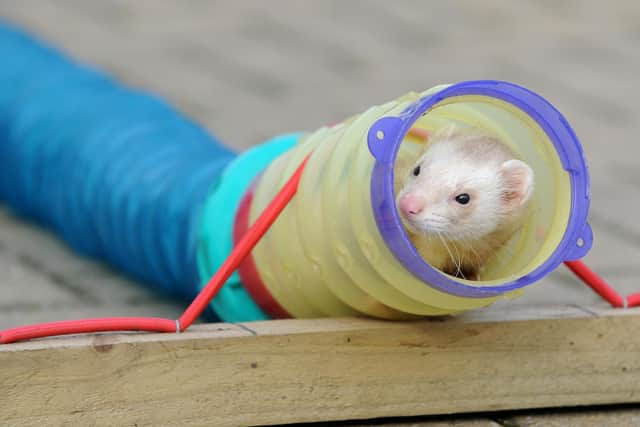The Yorkshire Vet: Why a pair of ferrets proved fiddly and not so fragrant
On my first day at secondary school, when I was eleven, the task during English was to go to the library and “find a book”. Of course, it was an exercise to teach new pupils how to make use of the library. In the days before Google, it was where we got our information. My classmates searched for books about football, cricket or academic topics but I had the librarian flummoxed- the school did not have a single book on the topic of “Ferrets and Ferreting”. I was disappointed and my first day at big school was not off to an illustrious start.
In the present day, my knowledge of these curious creatures has expanded and doesn’t seem to have been hindered by the shortage of literature available to me as a boy. Both the ferrets required surgery on their nether regions, but different procedures with markedly different outcomes. The first, a rescue ferret called Brian was simple enough. He needed to be castrated. This is an excellent way to reduce the masculine impulses, allow the male to cohabit happily with other males without fighting and with females without mating. And, with hormones removed, the smell subsides considerably.
Advertisement
Hide AdAdvertisement
Hide AdFor Bruce, contestant number two, the testicular surgery was very different. In fact, it was vastly different (a joke I made almost continuously, much to the annoyance of everyone within earshot). Bruce was in for a vasectomy.


“Why would a ferret need a vasectomy?” I hear you ask. The answer lies in the peculiar reproductive cycle of the female of the species. Female ferrets, called jills, are induced ovulators. This means they only ovulate after they have been mated. It’s a great way to increase the chances of becoming pregnant and, in ferret circles at least, an evolutionary advantage. The downside for the jill is that the persistent state of oestrus leads to prolonged periods of high oestrogen. Not only can this be irksome, but it’s downright dangerous. High oestrogen can suppress the bone marrow, leading to life-threatening anaemia. There are several ways to reduce this risk, but one tried, tested and fool-proof way is to let them be mated. If the male is vasectomised, the jill comes out of season, her bone marrow is spared and she doesn’t become pregnant. This was today’s fiddly job. It was a job for an extra powerful pair of glasses because the vas deferens, which needed to be identified, ligated and transected, is about 1 mm wide. The vas deferens is the pale pink tube which takes sperm from the testicle to the penis, and thence to the female. Finding the tube- one coming from each testicle- was as difficult as it sounds. To make matters worse, each time the area was palpated and manipulated in an effort to identify the correct part of anatomy, another wave of pungent ferret smell would flood through theatre like a tsunami. It’s very difficult to describe the nature, extent and potency of male ferret pheromone. It makes the eyes sting and forces swear words out of the mouth, although not for long, because if you leave your mouth open for more than a split second, the smell turns into a taste. Forty years ago, had I managed to find that book, I bet it wouldn’t have mentioned this in my book review!